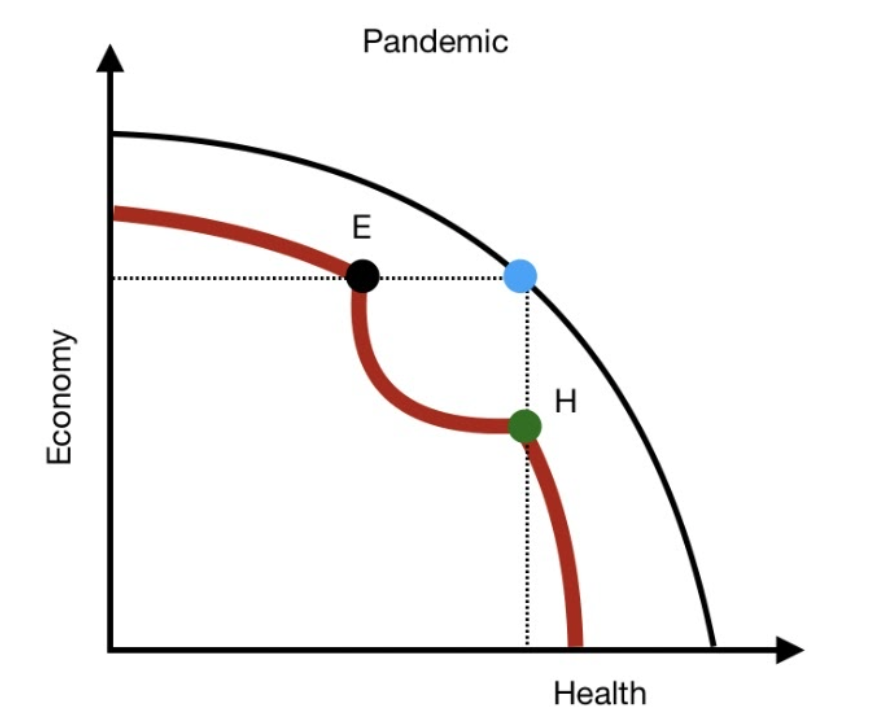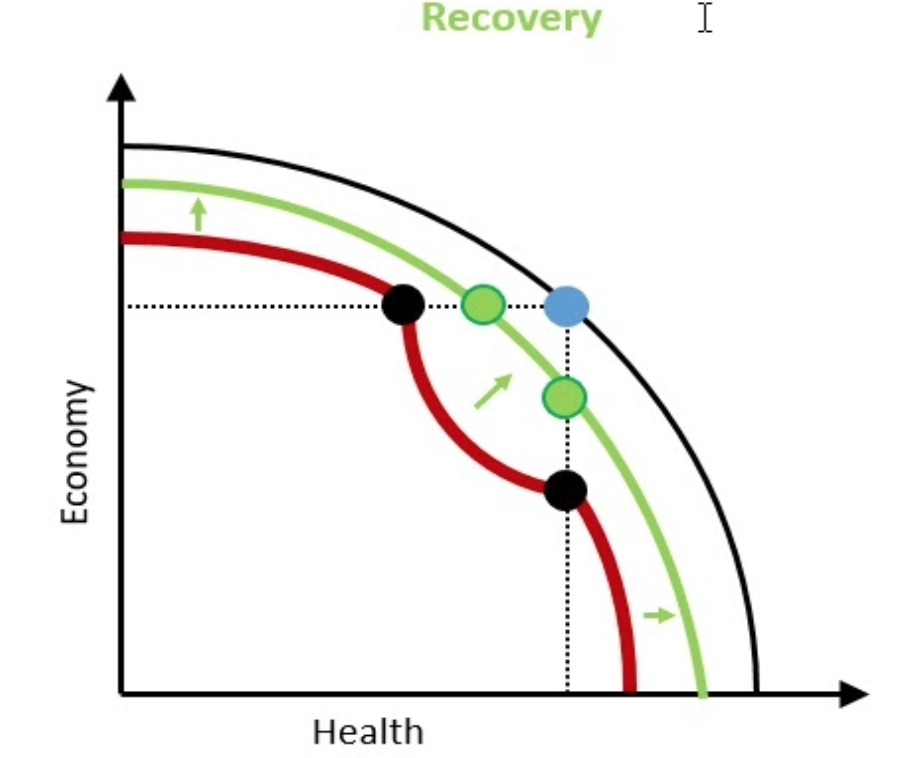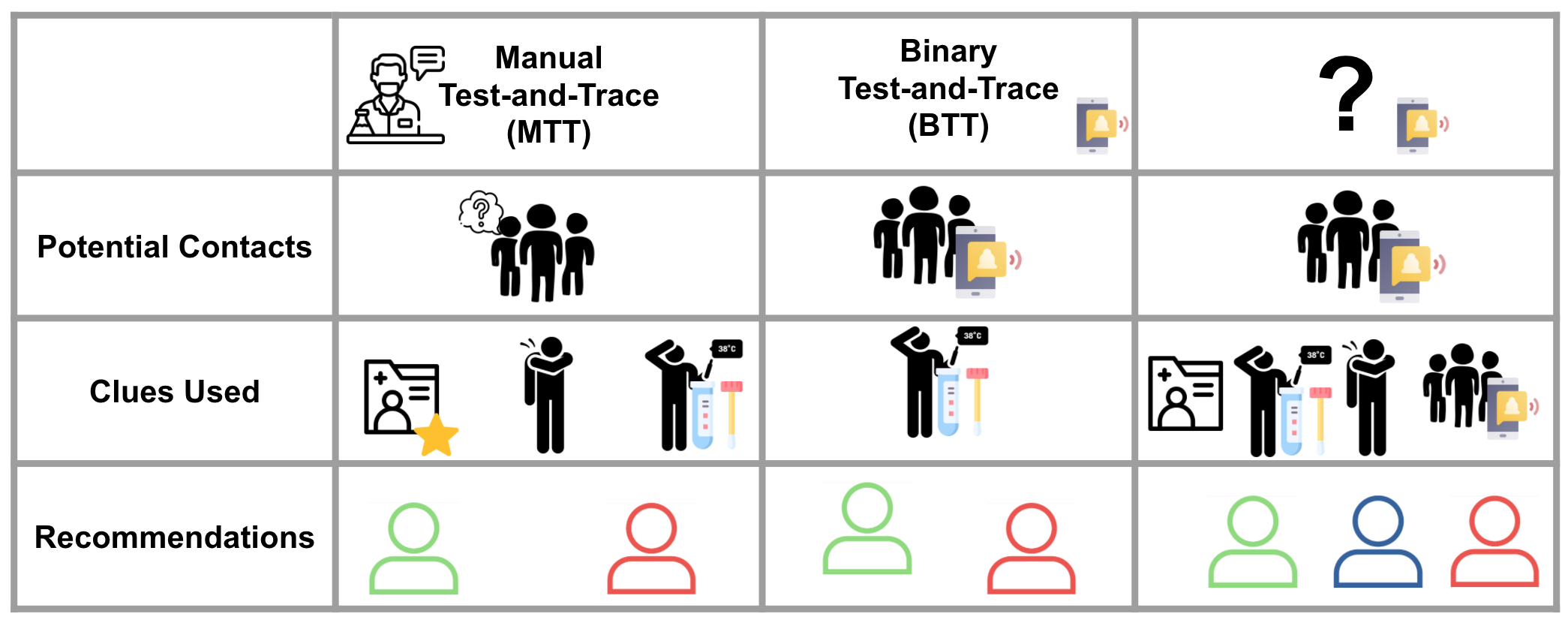Contact tracing as a personalization framework
Since March 2020, countries worldwide have taken unprecedented measures such as regional lockdowns, strict social distancing measures, or curfews to curb the transmission of SARS-CoV-2. Among many other societal issues, the Covid-19 pandemic has also brought to surface a widely ignored trade-off between economy and public health. While the economists face the problem of minimizing economic disruption, which comes at the cost of public health, the health officials face the opposite problem of minimizing the transmission of the virus, which comes at the cost of economic disruption.
The above trade-off is well explained by Production Possibilities Frontiers (PPF) in the blogpost by Prof. Joshua Gans. PPF is an abstract notion defining a trade-off between two quantities (in our context, economy, and health). Specifically, it says that one cannot expect to gain more of one quantity without losing the other, thereby exhibiting an optimal point for maximizing simultaneous gains. Further, external factors influence PPFs to move outwards (e.g., via technological innovation) or inwards (e.g., war, pandemic).
In Figure 1, PPF during the pandemic (brown) is different from the PPF for the normal times (black) in two ways


Thus, various policies have a meta objective of restoring the PPF to the levels before the pandemic. The examples include non-technical policies like injecting money into the economy or increasing hospital capacity and technological developments like vaccines or test-and-trace. While the vaccine development is underway, the test-and-trace system serves as a band-aid solution to open up the economy while controlling the outbreak.
Broadly, Test-and-trace involves notifying the past encounters of an index case (defined as an individual detected positive for the contagious disease) to recommend self-isolation. Thus, instead of treating the entire population as risky (e.g., in lockdown), test-and-trace cherry-picks highly risky individuals in the hope of controlling the transmission without closing down the economy.
Manual test-and-trace (MTT) involves public health employees (PHE) contacting the secondary cases (past encounters of an index case) via a direct call or an in-person search. PHEs can use their practiced judgment to diagnose a secondary case (e.g., based on their age, sex, or pre-existing conditions). However, the following factors add to its disadvantages, especially with regards to the Covid-19 pandemic
Technology has potentially addressed some of the above shortcomings.
As a result, Bluetooth Low Energy devices like smartphones can be configured to record encounters with other smartphones in the vicinity.
For example, if two smartphones share the same space for a particular duration, a hash key (e.g., 01ad93gd4er123) is generated in each device that serves as a future communication channel between them.
The criterion to record an encounter for Covid-19 identifies the devices to be present within 2 meters of another for a minimum of 15 minutes
However, given a fixed adoption rate, we ask how to address the problem (C) of personalization. Such personalization at scale will require more attention because these devices may record more contacts than accessible via memory recall (e.g., two strangers sitting at adjacent tables in a cafe).
In its most basic form (widely practiced), all traced devices are notified to recommend self-isolation. This system depends on the positive-or-negative test result and outputs quarantine-or-no-quarantine recommendations. It is, therefore, referred to as binary test-and-trace (BTT) in this series of articles.
Thus, at our disposal, we have two types of test-and-trace systems, each with its advantages and disadvantages. MTT uses expert judgment, which is not available to BTT, while it is slow and labor intensive, which is addressed by BTT. This necessitates a test-and-trace system that combines the expert judgment of MTT with scalable and instant communication channels of BTT. Doing this will require creating prediction models that cannot be relied upon for accurate results all the time. It is an indication to incorporate increasingly cautionary measures such as avoiding public transport or work-from-home depending on the uncertainty in predictions.

The problem of personalization from a limited amount of data available through user device has been attempted by various groups like NHSx